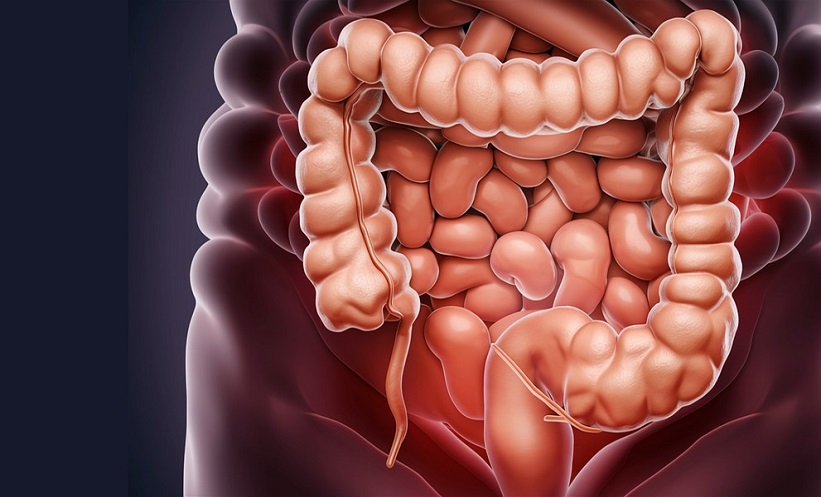Author: Robin Stannard, Editorial Co-ordinator
Citation: EMJ Radiol. 2023; DOI/10.33590/emjradiol/10303744. https://doi.org/10.33590/emjradiol/10303744.
![]()
A Special Focus Session at the European Congress of Radiology 2023 saw global experts in breast cancer imaging come together to explore the challenges, opportunities, guidelines, and dangers of breast cancer screening across multiple stages of life. Miri Sklair-Levy, Meirav Center for Women’s Health and High-Risk Clinic, Sheba Medical Center, Ramat Gan, Israel; Nuala Healy, Cambridge University Hospitals, UK; and Anne Tardivon, Department of Radiology, Institut Curie, Paris, France, shared their expansive experience, unique case reports, and novel literature to provide the audience with an examination of the nuance surrounding the screening and treating of breast cancer at different ages.
IMAGING IN FEMALES UNDER 30
Sklair-Levy opened their presentation with an in-depth examination of the complexities of breast cancer imaging in young females, defined as those under the age of 30. Breast cancer is the leading cause of death in young females, and recent epidemiological trends have shown increasing incidence in young females alongside increasing metastatic disease. While females under 40 represent 7% of breast cancer diagnosis, the annual incidence in females aged 25–29 is 8.1/100 000. Furthermore, age is the main independent risk factor for breast cancer, with breast cancer at a young age independent of poor prognosis as these females tend to have a higher risk of local recurrence. The incidence of sporadic early onset breast cancer of unknown risk is 90% compared with only 10% coming from high-risk genetic causes including BRCA carriers, p53 mutations, family history, or radiation exposure. This can increase challenges as this large percentage of young females with unknown risk may not be subject to regular screening programmes.
Sklair-Levy highlighted several challenges that can impede imaging and diagnosis in young females. Pregnancy-associated breast cancer (PABC) is breast cancer diagnosed during pregnancy, 1-year post-partum, or during lactation. While PABC is rare, it has an aggressive disease course and is often associated with delays in diagnosis due to the physiological changes to the breast during pregnancy and aggressive phenotypes of oestrogen receptor/progesterone receptor negative, HER2 positive, and triple negative cancer.
Diagnosis is difficult as PABC often presents as a palpable lesion, which can be difficult to differentiate from common benign pathologies during pregnancy and lactation such as fibroadenoma, lactating adenoma, galactocele, hamartoma, and abscess. Furthermore, imaging is challenging as MRI is contraindicated during pregnancy due to potential gadolinium teratogenicity; however, this can be performed during lactation. Ultrasound is the first-line diagnostic imaging modality in suspected PABC due to the lack of ionising radiation and the high sensitivity of up to 100% detection, but some cancers may appear to have benign features in ultrasound imaging, including parallel orientation, circumscribed margins, and posterior acoustic enhancement. Mammography tends not to be used in PABC unless cancer has been proven through biopsy due to the increased breast density in pregnancy; however, it can be useful for detecting suspicious microcalcifications and for the work-up of pathologic nipple discharge.
Recent studies have examined the use of non-contrast MRI in pregnancy and summarised that this method is feasible and can detect breast cancer in pregnancy; however, the technique requires lower software resolution and is not currently used in everyday practice. Sklair-Levy emphasised the importance of not delaying imaging due to pregnancy and lactation, underlining that practice should always start with ultrasound and follow-up as necessary. Furthermore, screening in high-risk females should not stop during pregnancy, and should instead be replaced by the available modalities.
IMAGING IN THE POST-OPERATIVE BREAST
The second talk, presented by Healy, focused on common indications for imaging, features associated with cancer recurrence, and the role of imaging in the reconstructed breast, which are all key considerations for post-operative breast imaging. Healy emphasised that when considering residual disease and local recurrence, it is important for radiologists to question how they can help surgeons in addressing these risks. When looking for residual disease immediately after surgery, MRI can be difficult to interpret due to the anatomical changes, surgical enhancement, and surgical resection cavity associated with surgery. Previous studies have shown that the sensitivity and specificity of post-operative MRI can be limited (61–79% and 47–73%, respectively). However, Healy noted that an enhancing mass, a thick nodular, or an irregular enhancement >5 mm should be considered suspicious of residual disease. Literature suggests that optimum time for a post-operative MRI is 28 days, as waiting longer does not improve sensitivity, positive predictive value, negative predictive value, or specificity. It is also essential that post-operative MRI is carried out prior to commencing radiotherapy. Healy further highlighted that these challenges underline the value of the pre-operative MRI, the indications for this being dense breasts, discrepancy between clinical examinations, and local oncoplastic techniques.
Radiotherapy has a dramatic impact in reducing post-operative breast cancer recurrence from 35.0% to 19.3%. Despite this, the risk of local recurrence. This risk is highest in the first 5 years post-surgery, peaking at the 2-year mark. This data emphasises the importance of imaging surveillance post-breast surgery, with Healy recommending annual surveillance for 5 years or up until screening age if under 50.
Signs of recurrence can include a new mass, asymmetry in architectural distortion within 2–3 cm of resection cavity, increasing density at the scar site, increasing microcalcifications, progression of skin thickening, breast oedema, enlarged auxiliary lymph nodes, and a loss is post-surgery stability (i.e., changes between consecutive mammograms).
Alongside mammography, MRI surveillance is advised for females under 50 and those with dense breasts. A recent meta-analysis study examining the benefit of MRI surveillance in all females with a personal history of breast cancer found insufficient evidence to recommend for or against surveillance MRI. Additional evidence has shown that the detection rate of mammography paired with breast ultrasound was increased over mammography alone (6.8 versus 4.4 per 1000 women). Furthermore, the novel technique abbreviated MRI, which is MRI with a shortened diagnostic protocol, is currently under investigation with initial evidence demonstrating improved sensitivity and specificity. However, no meta-analysis has yet been carried out comparing the diagnostic performance to full protocol MRI.
Healy closed their presentation by highlighting some of the exciting prospects in post-operative imaging. Healy underscored the need for deep learning and modelling for combining several features when predicting recurrence, as well as building a risk stratification calculator for recurrence. Finally, Healy conveyed the promising prospect of abbreviated MRI and the potential this has to enable a high throughput of examinations.
IMAGING IN ELDERLY FEMALES
The final presentation, which was given by Tardivon, explored the nuanced, challenging situation of screening, diagnosing, and treating breast cancer in elderly patients. An elderly female is defined as 65–>85 years; however, most clinical trials end at the age of 69 or 70, excluding a large proportion of this demographic. This means that, from a public health perspective, there are no data on screening mammography for women over 70 and on whether screening would also be of benefit for this population. Currently with a steadily increasing life expectancy and an ageing general population, more than 30% of cancers are detected in populations over 60, and 25% of cancers occur in females aged 70–74. Recent programmes in France and Scotland have extended screening age. The Scottish Breast Cancer Screening Programme now allows females to opt into continued screening to 73. Overall survival was statistically higher in the detected screened group, as well as non-breast cancer related survival.
Tardivon introduced several unique considerations that must be scrutinised when treating this elderly population. Firstly, the importance of doing no harm; longer life expectancy is a salient consideration for patients. However, radiologists must also understand that healthy life years do not always increase at the same level. When treating this age demographic, it is essential for physicians to meet the patient and understand their status, understand their level of frailty, and decide the imaging to perform based on these factors. Patients must never be denied an examination due to advanced age alone. Several tools are available to assist diagnosis and treatment decision making in elderly patients, such as the Age Gap Decision Tool, which considers comorbidities, frailty, cancer type, and tumour size, in order to advise on the best treatment pathway for elderly patients.
Overdiagnosis is also a key challenge in elderly patients. As females age, clusters of calcifications occur. Furthermore, there are multiple misinterpretations that occur in patients over 70 and, therefore, radiologists need to be aware of round shaped cancers of mucinous subtype and micropapillary subtype as well as stable invasive cancers characterised by tubular architectural distortion and focal asymmetry.
Tardivon closed their presentation by emphasising the importance of treating elderly people with breast cancer with respect. Tardivon challenged the audience to take an interest in patients’ lives and truly understand their level of frailty, as well as including them as much as possibly in the decision-making process and ensuring the patient understands why clinical decisions have been made.
CONCLUSION
At each stage of life, the screening, diagnosis, and treatment of breast cancer present different challenges. In young females, screening programmes are only available for high-risk populations, even though these account for only 10% of diagnoses and pregnancy can complicate diagnosis. Post-surgery MRI techniques are limited, and recurrence is high risk. In elderly females, breast cancer screening and clinical trials are often unavailable, with overdiagnosis presenting a significant challenge. These differences highlight that the age demographic must always be at the front of a radiologist’s mind, and the benefits and contraindications of each imaging modality must be considered for each patient’s unique situation.








